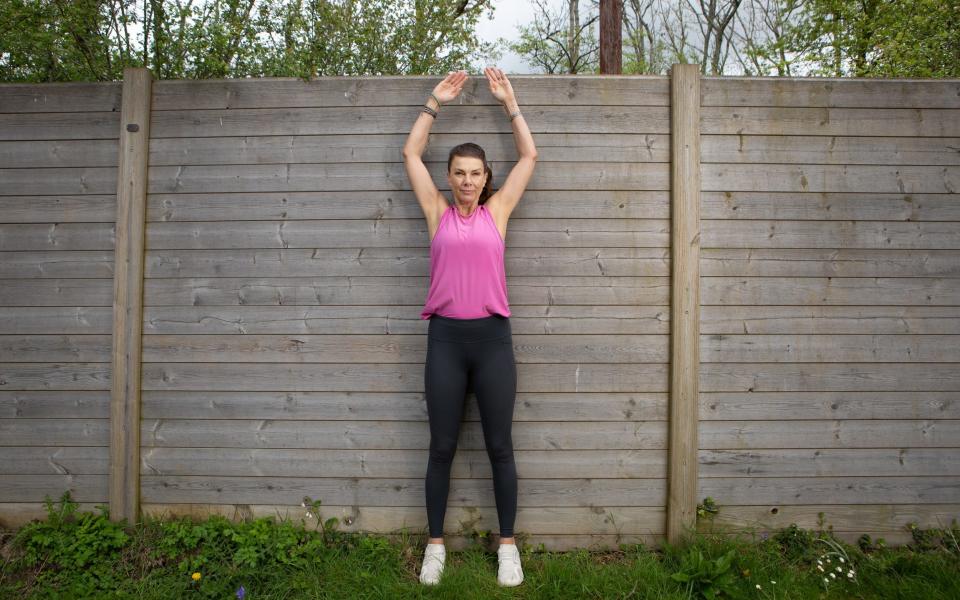Ten steps to get fit from scratch if you’ve never exercised before

Do you struggle to make exercise a habit that sticks? You’re not alone. Only 56 per cent of UK adults exercise regularly, compared with 77 per cent in Germany, 65 per cent in Spain and 63 per cent in France. A quarter of us are completely inactive, doing less than 30 minutes a week, and, alarmingly, inactivity is now associated with one in six deaths.
But deciding to change is the first (and hardest) step, so the fact that you’re reading this means you’re on the right track. Now, where to start if you’ve never exercised before?
First, establish what your fitness goals actually are. “Broadly, being ‘fit’ means injury-free and able to do your daily tasks, with energy left over for fun,” says Kathryn Freeland, the founder of Stede Court fitness retreats. “Have your own goals – not what your friends or social media are doing.” She has put together a simple, adaptable four-week plan (below), and we’ve gathered tips from the UK’s best fitness experts to support you. So have a stretch, and let’s get started.
Write down what you want to achieve
“If you don’t believe that you can do it, chances are you won’t,” says the personal trainer Sarah Campus, the founder of LDN Mums Fitness. “Mindset is a powerful thing, so being determined to make that commitment will significantly aid your success.” And don’t just commit in your mind. “Actually write down what you want to achieve,” Campus adds. “Writing it down makes it real. Tell yourself that you are 100 per cent ready to make changes.”
Start small
“People often bite off more than they can chew, and then feel like they’ve failed when they can’t maintain it,” says Elizabeth Davies, a fitness coach who shares motivating (and funny) wisdom on Instagram @ThisWomanLifts. “If your goal is strength training in the gym three times a week, then define the easiest version of that, which will still enable you to build momentum.” The idea is to shrink it down to be super manageable, so that could be one session a week. “I want you to feel at least 8/10 confident that you can do it even in a busy or stressful week,” says Davies. “If you’re less than 8/10 confident, shrink it down even more to make it easier. Success breeds success.”
Make it convenient
Most of us are inherently quite lazy so if something is a bit inconvenient, we’re far less likely to do it. “We are humans and will naturally talk ourselves into the easier route,” laughs Marsha Lindsay, the founder of Nobu Pilates. “Make sure your fitness locations fit in with your weekly routine. For example, having a membership close to where you live – but you work hours away – is setting you up for failure. Remove as many barriers as possible.”
Find something you enjoy
“Research published in the Journal of Sport & Exercise Psychology shows that enjoyment plays a significant role in sticking to exercise long term,” says personal trainer and mindset coach Chloe Thomas. “So try different types of physical activity until you discover something that brings you joy. It might be dance, hiking, Pilates, running, surfing, tennis or callisthenics (using your body weight as resistance, such as with push-ups, squats, lunges and planks) – it does not have to be in a gym! When you enjoy what you’re doing, you’re more likely to stay motivated.”
Identify your ‘why’
There is always a reason behind a desire to get fitter, and it doesn’t always take something as dramatic as a health scare. “It could be wanting to lose body fat so you feel more confident in your clothes, gaining more strength so you can play with your grandchildren or exercising daily to improve your mental health,” says Georgie Kean, a boxer and trainer at Bodyism. “Keeping your ‘why’ in mind is going to be essential in keeping you on course.”
Celebrate your successes, big and small
Managed your first long walk? Pat yourself on the back. It might not seem like much, but taking that first step really is the hardest part. “It’s important to pause and congratulate yourself,” says Catie Miller, the founder of Barre Series. “And don’t be afraid to share your targets and goals aloud. You might inspire a friend, colleague or partner to join you in getting fit, too.”
Be consistent
“A new habit requires consistency for it to stick,” says Mike Tanner, the head of learning and development at Bodyism. He reiterates the point about starting small, explaining that more doable habits are easier to stick with. “Do short, less intense workouts to begin with – even a walk around the block after breakfast. Consolidate the habit before you start pushing yourself.” Then consider picking certain days or times for workouts, and putting that in your diary. Or try “habit stacking”, where you tack the new habit on to an existing one, such as doing some squats while the kettle is boiling. Catie Miller agrees. “Repeating habits reinforces specific neural pathways in the brain,” she explains. “Over time, these pathways become stronger and more automatic, making the habits easier to maintain. Consistency is key when it comes to fitness, nutrition and mental well-being.”
Track your progress
Seeing how far you’ve come is an excellent way to stay motivated, so find a way to monitor your improvement. “You could set a five-minute timer and see how far from your home you can walk in that time,” suggests Elizabeth Davies. “Make a note of where you get to. Then, after a few weeks, retest and see if you’re able to beat that distance. We can adapt this principle to anything. For example: see how many press-ups you can do, train by doing press-ups consistently for six weeks, then retest and compare. See how long it takes you to run a mile, run consistently for six weeks, then retest and compare. It’s a nice way of seeing that your efforts are paying off.”
Embrace recovery
“You might want to go full steam ahead into your fitness journey with an ‘all or nothing’ approach,” says Rowan Clift, a training specialist at the fitness coaching app Freeletics. “But recovery is essential, whether you’re a beginner or a professional. Not taking all-important rest days can result in loss of motivation, burn-out or injury. Overdoing it every day with the aim of getting fast results is counterproductive. Instead, aim to create a healthy relationship with exercise from the outset and let your body recover. Then you can push yourself further when you train again.”
Just try four weeks
“Set yourself a goal to commit to for four weeks,” says Najeeb Abunahl, the owner of Studio Fix. Having a fixed amount of time makes it less daunting, and therefore more doable. “After four weeks, you’ll be able to see how exercise fits into your life, and how you can adapt to your new routine.” It’s also enough time to start to notice your strength and stamina improving, which will inspire you to keep going.
Kathryn Freeland’s four-week get-started plan
Week 1
Get moving daily. 20-60 minutes of walking is great. And get to know yourself: do you prefer exercising alone or with a friend? In the morning or afternoon? Find what works for you.
Week 2
Keep moving every day, and work on posture with daily shoulder blade squeezes and wall angels.

Week 3
Add on to the above 1-2 sessions of structured, fun exercise. It might be swimming, cycling, an exercise class, yoga… The important thing is that you enjoy it.
Week 4
Add on to the above 2 x sessions of 4 strength exercises: plank, squat, bridge and reverse lunge [shown in pics]. Start at 3 x 10 reps and add about 10 per cent more each week, or when it becomes easy. Just don’t do this on consecutive days, to allow your muscles to repair in between, and remember to stretch afterwards.
Rosamund Dean is the founder of the wellness newsletter Well Well Well.